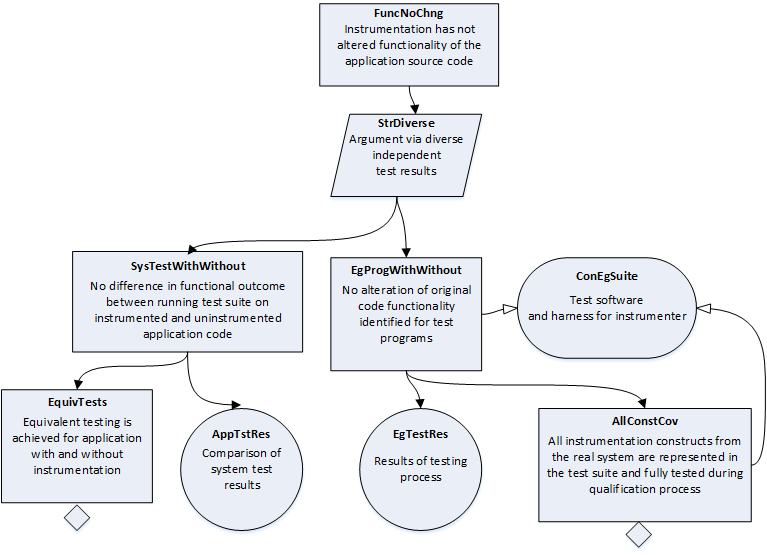In the second of two related blog posts, I describe one method to present a certification argument for the use of instrumentation in source code coverage analysis.
In a previous post I explained how the coverage gained from instrumented code can be used to support DO-178B/C Level A compliance for code coverage. RapiCover uses lightweight source code instrumentation in order to perform coverage analysis. This means that a copy of the application code is annotated so that when it is run we can capture trace data to see which lines of source, decisions, etc., were exercised.
The instrumented code is typically not deployed on the final system. As we want to ensure the results are accurate, we need to be sure that the instrumentation process has not changed the functionality of the original application. For example, if the instrumentation had somehow removed or altered a construct and hence misleading results were presented. As part of our tool qualification process we perform rigorous testing on our instrumenter to ensure that this doesn't occur, using specially designed test programs.
To provide additional confidence the applicant should also run their test suite on both the instrumented and uninstrumented source code and compare the results. If there are no discrepancies then this provides evidence of no changes to functionality. A safety argument representing this dual approach is presented using the Goal Structuring Notation (see GSN description). Note that this provides diverse evidence of the instrumenter's non-interference (StDiverse, SysTestWithWithout, EgProgWithWithout).
The strength of evidence will depend on the depth of testing of the different software (EquivTests). We also need a sanity check to ensure that all the types of construct that are instrumented on the application have been represented in our test programs (AllConstCov). To be complete, I should mention that a pathological case exists where the compiler may have inserted additional code related to the instrumentation which is somehow not tested. However, this is a much wider issue with compiler trustworthiness affecting all aspects of the application code, and is why additional certification requirements exists to examine the object code at Level A. Also, the instrumentation routine itself (generally written by the customer) could have nasty side effects. Our advice would be to avoid these!


 Rapita System Announces New Distribution Partnership with COONTEC
Rapita System Announces New Distribution Partnership with COONTEC
 Rapita partners with Asterios Technologies to deliver solutions in multicore certification
Rapita partners with Asterios Technologies to deliver solutions in multicore certification
 SAIF Autonomy to use RVS to verify their groundbreaking AI platform
SAIF Autonomy to use RVS to verify their groundbreaking AI platform
 RVS gets a new timing analysis engine
RVS gets a new timing analysis engine
 How to measure stack usage through stack painting with RapiTest
How to measure stack usage through stack painting with RapiTest
 What does AMACC Rev B mean for multicore certification?
What does AMACC Rev B mean for multicore certification?
 How emulation can reduce avionics verification costs: Sim68020
How emulation can reduce avionics verification costs: Sim68020
 How to achieve multicore DO-178C certification with Rapita Systems
How to achieve multicore DO-178C certification with Rapita Systems
 How to achieve DO-178C certification with Rapita Systems
How to achieve DO-178C certification with Rapita Systems
 Certifying Unmanned Aircraft Systems
Certifying Unmanned Aircraft Systems
 DO-278A Guidance: Introduction to RTCA DO-278 approval
DO-278A Guidance: Introduction to RTCA DO-278 approval
 Avionics Certification Q&A: CERT TALK (with Consunova and Visure)
Avionics Certification Q&A: CERT TALK (with Consunova and Visure)



















